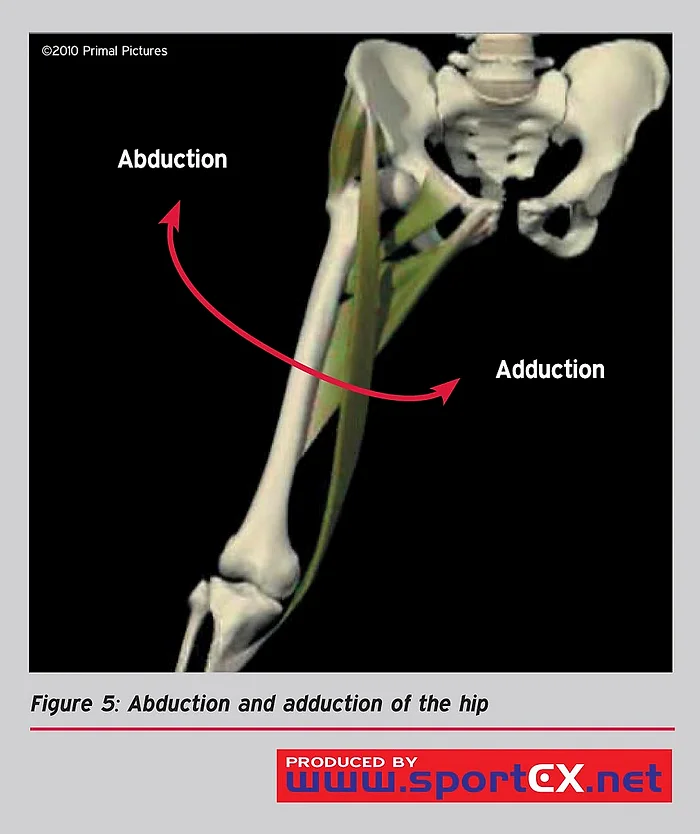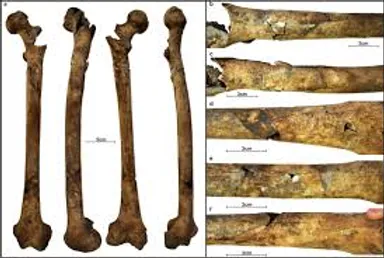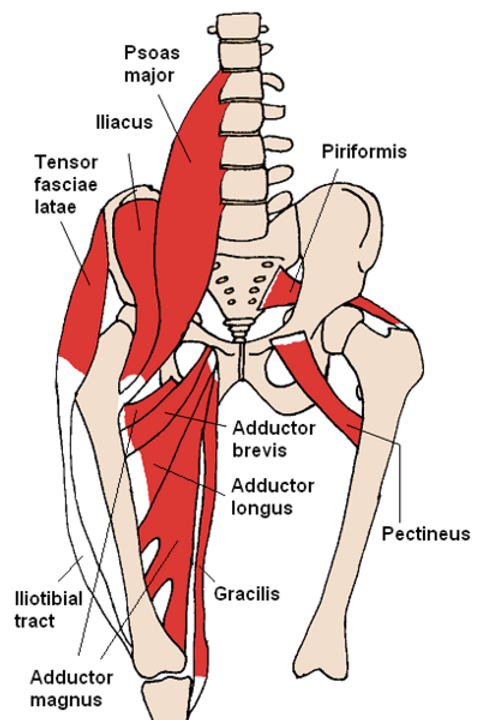“The more I learn, the more I realize how much I don’t know.” – Albert Einstein
This pretty much sums up our feelings at the Vital Six about a lot of things ( which is how we like it ). In particular, of late, we’ve wanted to take a deeper look at the role of the adductors in keeping our hips healthy.
One of the reasons why the adductors are so important is because they make up a significant portion of our leg’s mass. This coupled with their broad attachments across the pelvis, femur, and knee we can start to understand why a lot of research has been devoted to understanding these muscles.
While this may seem slightly straightforward….as their name implies….all five adductors work to adduct the hip joint. If you separated your body into right and left halves and then took your right leg and brought it across the mid-line of your body, this would be considered right hip adduction and you would have just used your adductors. Unfortunately, what many fail to realize is that most muscles function in more than one plane of motion. This means the adductors can actually help bring your knee to your chest (hip flexion), the knee behind your body (hip extension), and turn your toe in or out (hip internal and external rotation).

To complicate things further, depending on what position the hip is in, the actions of the adductors change. This will be covered in more detail below but as an example, the adductor longus is considered a hip flexor when the hip is in extension (knee behind the body) and a hip extensor when the hip is in flexion (knee to chest). This means in addition to adduction, the adductor longus is a hip flexor and extensor.
Let’s take a brief moment to outline all the hip adductors and hopefully provide some clarity to the exact role of each adductor when the hip is in neutral ( think standing with the toes straight ahead ).
Pectineus
The pectineus muscle originates on the top of the pelvis and ends on the back side of the femur. Its actions include hip adduction, hip flexion, and possibly hip internal rotation depending on who you believe. Due to its proximity to the hip joint and its broad attachment on the top of the pelvis, its actions as a hip flexor and effects on pelvic orientation may be understated (anterior pelvic tilt). Relatively, the pectineus is smaller in size when compared to the other hip adductors. This may limit its role as a significant adductor below 90 degrees of hip flexion.

Adductor Brevis
The adductor brevis attaches on the top side of the pelvis and ends on the back side of the femur. Its actions, like the pectineus muscle, include hip adduction, hip flexion, and possibly hip internal rotation. In general, this muscle resides a little “deeper” when compared to the pectineus, adductor longus, and gracilis. Its implications on pelvic orientation may be understated as well.
Adductor Longus
From the image above, we can easily see how much bigger the adductor longus is in comparison to the pectineus and brevis. It originates on the top of the pelvis bone and ends on the back side of the middle half of the femur. Primarily the adductor longus is a hip adductor with secondary actions of hip flexion, extension, and internal rotation. Because of its ability to flex and extend the hip, extra consideration should be taken when training runners or sprinters.
Gracillis
Because the gracillis muscle attaches below the knee, in addition to adducting the hip joint, the gracillis flexes the knee. By incorporating some knee flexion-based exercises we might be able to get some carryover to adduction strength.
Adductor Magnus
The adductor magnus is the one adductor to rule them all. If you’re going to take away anything from this blog post let it be this: The adductor magnus is typically considered the second largest muscle in the body, next to the gluteus maximus, and its role as a primary hip extensor is almost always understated. Anatomically we can break the adductor magnus up into two parts: The anterior and posterior heads.
The anterior head is oblique and runs from the bottom of the pelvis down the side of the thigh bone and assists with adduction of the hip. In turn, the posterior head originates very close to the hamstring group and runs the entire length of the thigh bone, terminating at the medial condyle of the femur. Due to the size and orientation of the muscle, the posterior head of the adductor magnus is considered a very important hip extensor.
So what gives with some of the adductors being hip flexors and hip extensors?
It all comes down to the position of the hip joint. Because of the adductor’s distal attachments to the femur, the relative position of the hip joint determines whether the adductors will act as hip flexors or extensors. This shift from flexion to extension and vice versa typically occurs outside of 40 to 70 degrees of hip flexion. Within this 40 to 70-degree window, the adductors run perpendicular or close to the axis of rotation at the hip joint, meaning their ability to produce hip flexion or extension is limited. Greater than 70 degrees of hip flexion and the line of force is posterior to the hip joint; less than 40 degrees of hip flexion and the line of force is anterior to the hip joint.
So, depending on how much relative flexion the hip is in, the adductors can assist in flexion and extension of the hip joint. This is an important consideration when training for powerful movements such as sprinting, cycling, running up a hill, or exploding out of a deep squat. One caveat is that the posterior head of the adductor magnus remains a powerful hip extensor, regardless of the position of the hip.
Do the adductors create internal or external rotation at the hip joint?
Depending on whose research you read, you’ll find different answers. From what we’ve found the adductors can provide a minimal to moderate internal rotation torque at best. At first, we were confused. The adductors attach on the back side of the femur, therefore they should produce hip external rotation right? Not so fast.
Like a bow, the shaft of the femur is bent toward the front of the body and away from the back of the body. Through compression along the posterior shaft and tension along its anterior shaft, the femur can dissipate stress more effectively rather than if it were straight up and down.

This is where things get tricky, but because of the bowed shape of the femur, the line of pull of the adductors is anterior to the hip’s vertical axis of rotation. This creates an internal rotational moment arm and thus a potential for internal rotation of the hip joint.
Hip Adductor Strength and Injury Risk
Now that we know what the adductors do, it’s easy to understand why having strong hip adductors is important. Weakness of the hip adductors has been implicated as a risk factor for groin strains; this is especially pertinent when considering the ratio of hip abduction strength to hip adduction strength. One study of professional hockey players showed a 17 times increased risk for groin strains when adductor strength was less than 80% of hip abductor strength. Remember just like the quads and hamstrings need balance, the adductors and abductors seem to follow the same rule.
Another consideration is the proximal stability of the pelvis and core strength. If you’ve ever followed any of Greg Cook or Mike Boyle’s stuff than you will understand that in order for distal mobility to occur, you need proximal stability. As discussed above, all of the adductor muscles attach on the pelvis and therefore affect pelvic position. If the core muscles are unable to provide a stable “base” for the adductors to work from, then it’s like trying to create tension in a rope that’s not tied to anything.
Furthermore, studies have shown a blending of the tendons between the proximal adductor longus and distal rectus abdominis muscle, almost as if they work in tandem. Not surprisingly, core weakness is a strong risk factor for groin strains.
Conclusion
1. The adductors work to adduct, flex, extend, and internally rotate the hip depending on the position of the hip joint.
2. The adductor magnus might be the most powerful hip extensor, especially when the hip is flexed
3. Hip adduction, abduction, and core strength are all risk factors for groin strains
We hope you enjoyed the article. Stayed tuned for Parts 2 and 3 where we discuss rehab applications and considerations.


